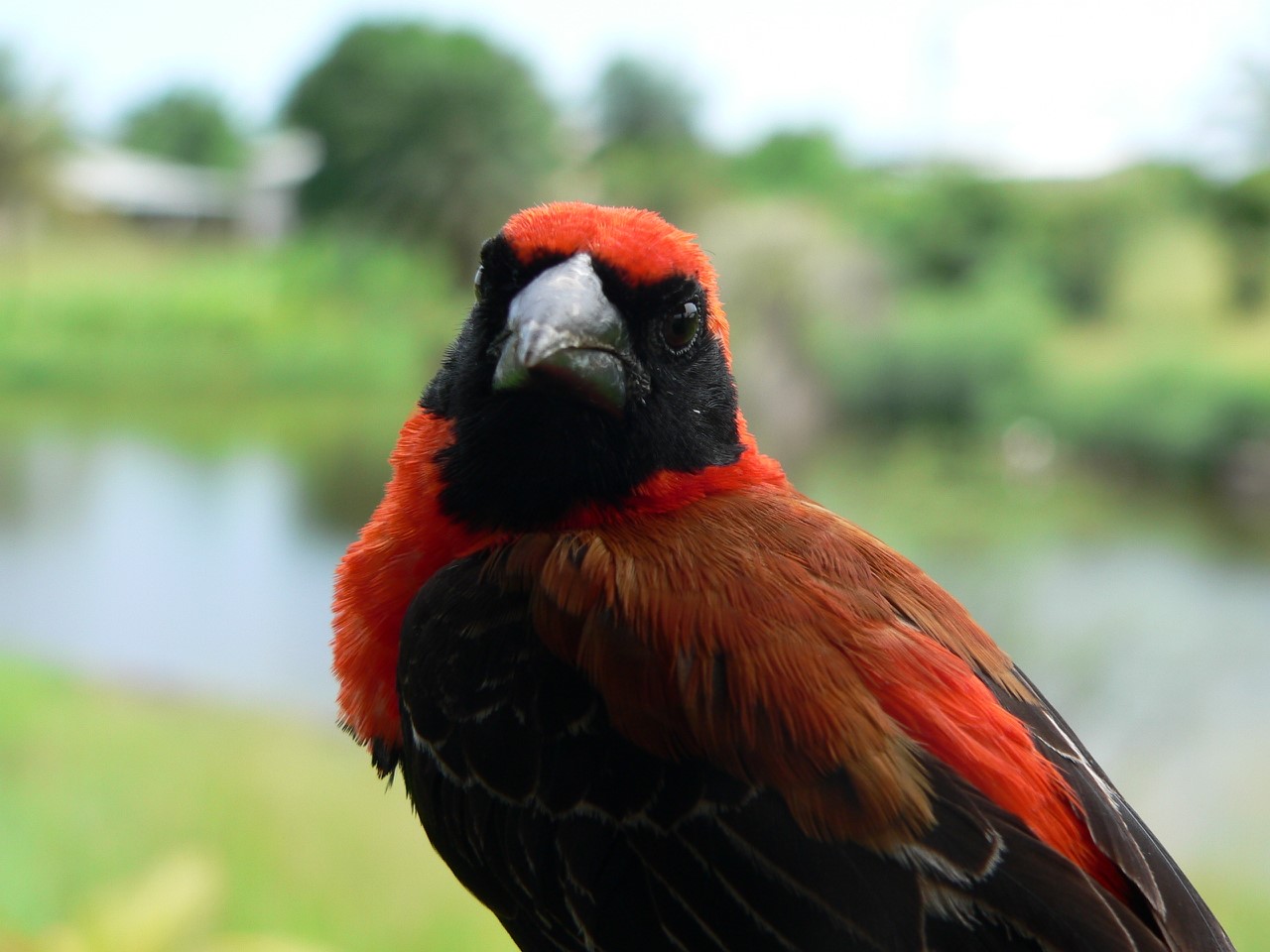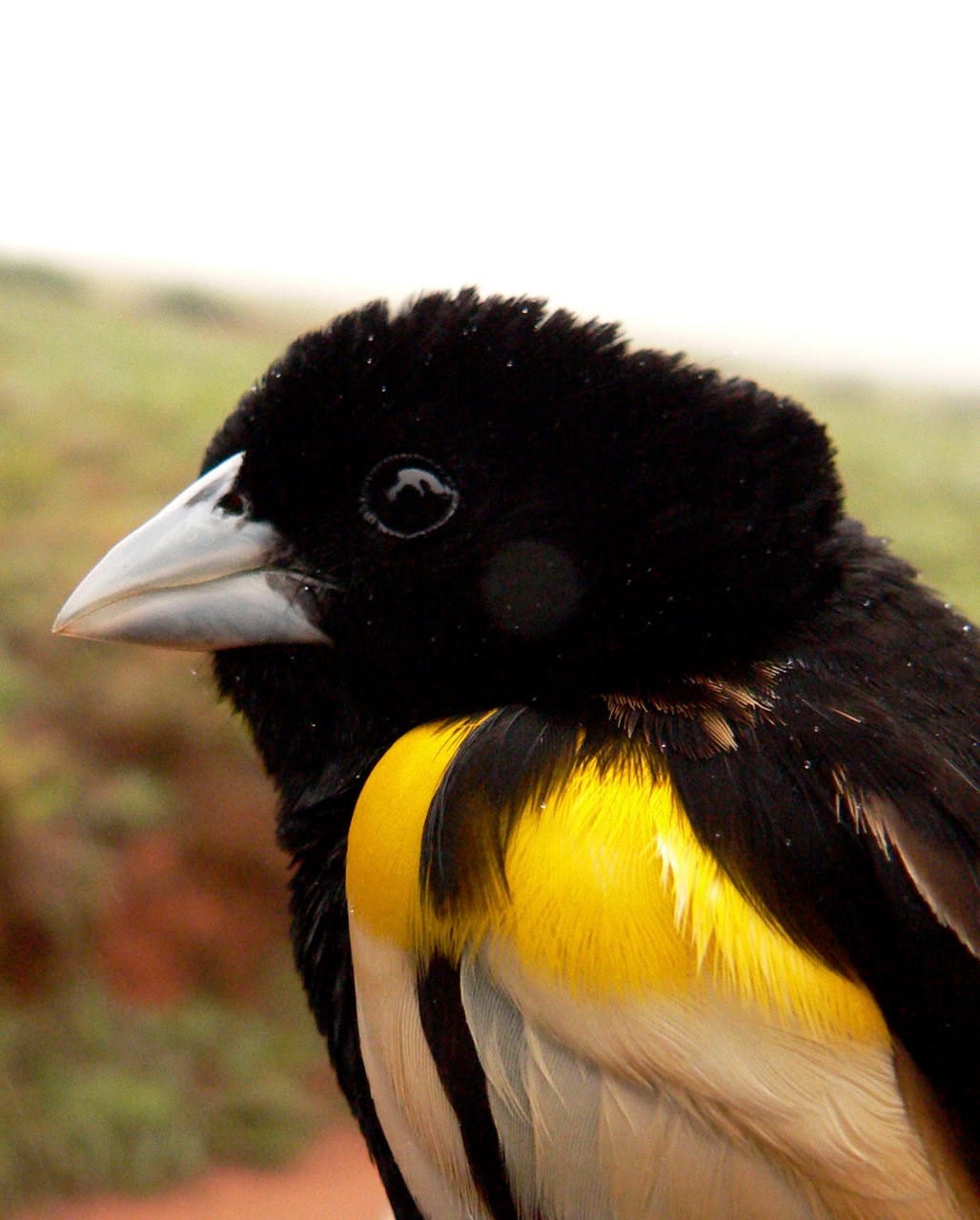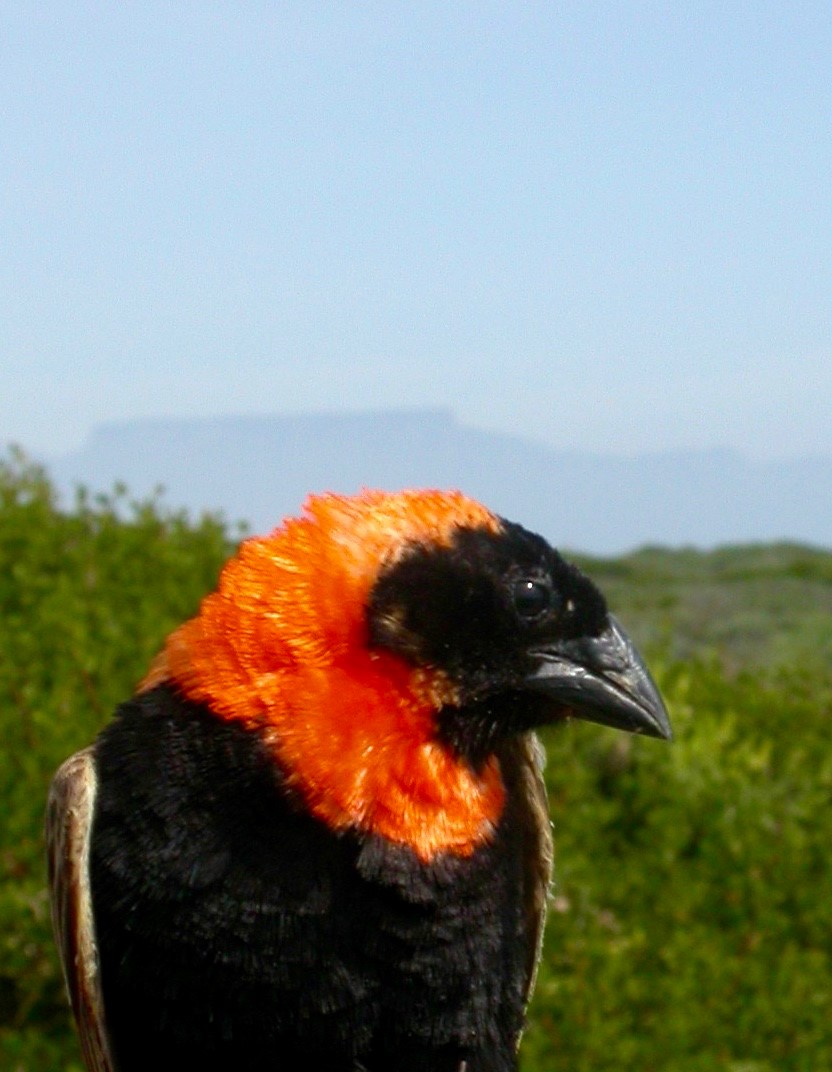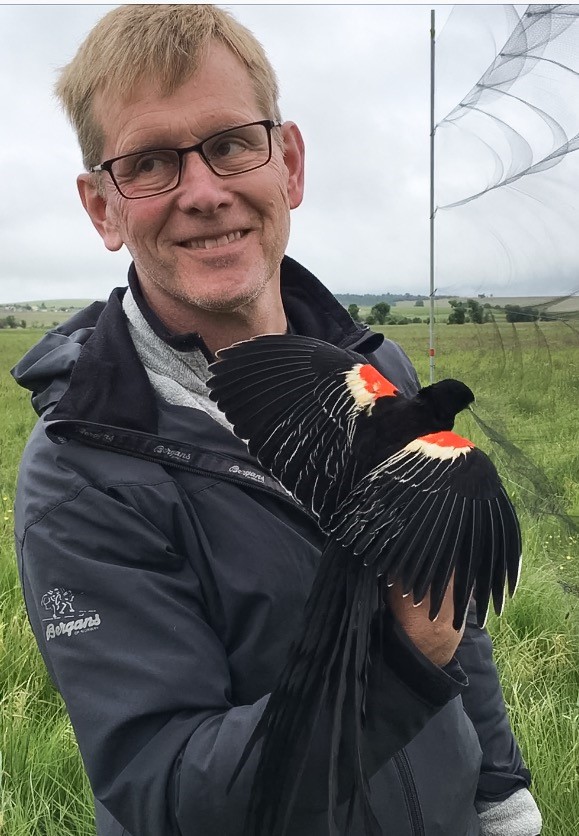
Photo Staffan Andersson.
Conspicuous colors in birds and other animals typically result from evolution by sexual selection, Darwin’s ingenious but for long controversial explanation for costly adornments in nature.
 Knowledge of sexual selection and its consequences (not just for appearance and behaviour, but also for speciation and biodiversity), has increased enormously during the past decades, but is still limited by incomplete understanding of the underlying genetic mechanisms.
Knowledge of sexual selection and its consequences (not just for appearance and behaviour, but also for speciation and biodiversity), has increased enormously during the past decades, but is still limited by incomplete understanding of the underlying genetic mechanisms.
For intensely red colour signals in birds, however, the genetic basis is about to be unraveled. Researchers in Cambridge and Gothenburg recently identified a gene, CYP2J19, associated with the ability of birds to chemically modify yellow carotenoid pigments obtained from the diet into red pigments.
A new study, published in the journal Molecular Ecology, confirms a key role of CYP2J19 in the evolution of red colour signals in wild birds. The expression of the gene was compared across 16 species of African weaverbirds, which have been studied for a long time with respect to sexual selection and evolutionary history of red and yellow male breeding plumages. In all species with red ketocarotenoid pigmentation, the expression of CYP2J19 in the liver was much higher than in any of the yellow species.
 - Whereas the gene was identified in mutant strains of captive birds, we now show its importance for evolution of red coloration in the wild, says Staffan Andersson, professor and project leader at University of Gothenburg. It is also particularly exciting, he adds, to confirm this mechanism behind the spectacular colour diversity of weaverbirds, where we have been looking for it all along.
- Whereas the gene was identified in mutant strains of captive birds, we now show its importance for evolution of red coloration in the wild, says Staffan Andersson, professor and project leader at University of Gothenburg. It is also particularly exciting, he adds, to confirm this mechanism behind the spectacular colour diversity of weaverbirds, where we have been looking for it all along.
The fact that gene expression and associated coloration differ between closely related species with similar ecology and sexual selection, is very interesting, says co-author Maria Prager.
- It reminds us that variation among species, and ultimately biodiversity, does not only derive from adaptive evolution. Diversity may also, partly or even mainly, be a result of genetic constraints that limit the rate or direction of evolution.
 In this case, whereas experiments have shown that males in yellow species would benefit from red coloration, they appear to be incapable of switching on the high liver expression of CYP2J19 that would allow them to make red pigments.
In this case, whereas experiments have shown that males in yellow species would benefit from red coloration, they appear to be incapable of switching on the high liver expression of CYP2J19 that would allow them to make red pigments.
- Simplified, one might say that the say that the yellow species are "waiting" for beneficial mutations, Staffan Andersson concludes.
The study was published in Molecular Ecology on December 12.
Contacts:
Gothenburg:
Staffan Andersson
+46 (0)708-64 19 59 / +46 (0)31-786 36 47
staffan.andersson@bioenv.gu.se
Maria Prager
+46 (0)739-408959
maria.prager@bioenv.gu.se
Cambridge:
Nick Mundy
+44 1223 336657
nim21@cam.ac.uk

 Knowledge of sexual selection and its consequences (not just for appearance and behaviour, but also for speciation and biodiversity), has increased enormously during the past decades, but is still limited by incomplete understanding of the underlying genetic mechanisms.
Knowledge of sexual selection and its consequences (not just for appearance and behaviour, but also for speciation and biodiversity), has increased enormously during the past decades, but is still limited by incomplete understanding of the underlying genetic mechanisms. - Whereas the gene was identified in mutant strains of captive birds, we now show its importance for evolution of red coloration in the wild, says Staffan Andersson, professor and project leader at University of Gothenburg. It is also particularly exciting, he adds, to confirm this mechanism behind the spectacular colour diversity of weaverbirds, where we have been looking for it all along.
- Whereas the gene was identified in mutant strains of captive birds, we now show its importance for evolution of red coloration in the wild, says Staffan Andersson, professor and project leader at University of Gothenburg. It is also particularly exciting, he adds, to confirm this mechanism behind the spectacular colour diversity of weaverbirds, where we have been looking for it all along. In this case, whereas experiments have shown that males in yellow species would benefit from red coloration, they appear to be incapable of switching on the high liver expression of CYP2J19 that would allow them to make red pigments.
In this case, whereas experiments have shown that males in yellow species would benefit from red coloration, they appear to be incapable of switching on the high liver expression of CYP2J19 that would allow them to make red pigments.